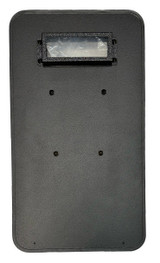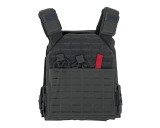In Layman’s Terms: What are NIJ Body Armor Levels
In Layman’s Terms: What are NIJ Body Armor Levels
NIJ Threat Level naturally pops up in almost every talk about efficiency of body armor, and so it does when you read armor descriptions in online shops. The NIJ Level seems one of the most important specs of body armor, but what does it mean exactly? How come weapon experts do not recommend the highest NIJ Level IV left and right?
Let’s once again review the National Institute of Justice Standards and put everything as straightforward as possible, in layman’s language.
About NIJ
The National Institute of Justice is a special agency in the U.S. that among many other activities related to crime and crime prevention such as researching current public safety needs, developing new forensics technologies, or developing evidence-based knowledge about efficiency of certain crime-fighting practices, also researches, develops, and tests body armor.
The NIJ develops body armor performance standards based on special metrics called the threat level. The current standards for ballistic protection and stab protection are, respectively NIJ 0101.06 and NIJ 0115.00. The ballistic resistance standards rate body armor based on their ballistic performance, i.e. the ability to withstand a shot (or multiple shots) of specific standard ammo, where the mass of the bullet and its velocity are within the specified range.
The NIJ certifies body armor sold in the U.S. And this certification means a lot, because it guarantees that the certified armor really can stop threats it claims to stop. You should really stick to a “NIJ certified” label when buying body armor.
What are NIJ threat levels
The threat level indicates a range of ammo types with similar or equal damaging capability. So, in order to make sure the armor set can withstand a particular threat level, we basically put the armor onto a test apparatus, then we load a gun with the specific ammo, and shoot the armor the required amount of times. If the armor successfully stops penetration of bullets, this means such armor is efficient against this threat.
Of course, in reality the NIJ 0101.06 standard much more scrupulously describes the entire testing procedure from accurate selection of armor samples to environmental conditions and range measurement methods. The weapons the test shots are made from must also be pre-evaluated and should meet certain quality and accuracy criteria. Tested armor plates are pre-conditioned to equalize their parameters, and measurement tools are calibrated before the test.
Currently there are 5 threat levels:
- Level IIA
- Level II
- Level IIIA
- Level III
- Level IV
A typical school of thought regarding these levels is that the higher the NIJ rating of the armor, the better this armor is. While in reality this isn’t exactly so. Remember: we are talking about threat levels, not armor levels or protection levels (although you might hear such wording too, here and there). The threat level indicates the type of the ammo being shot, and the level of threat it poses, not some theoretical ability of the armor to protect you. And that makes a huge difference.
A knife is smaller than a sword, so it can be stopped with less effort, but that does not mean a knife is less dangerous. Also, a plate mail that can efficiently stop the sword, often cannot grant safety against the knife which can easily be stabbed through joint holes of the mail. The same is true for ballistic body armor: Level IV armor would not necessarily be efficient against Level III threats and vice versa.
NIJ body armor levels explained
NIJ Type IIA
The standard sets the following minimum performance of the armor tested for Level II threats. The armor ust stop FMJ RN bullets up to 8 g and shot with a velocity of up to 373 m/s; and .40 FMJ up to 11.7 g and 352 m/s.
The type of soft armor can stop low velocity bullets shot from revolvers or handguns. This armor type offers no protection from rifle shots and is inefficient against some higher velocity bullets. However, it is excellent for minimum bullet resistance and for concealed wearing.
NIJ Type II
The NIJ standard states that Type II armor must withstand 9 mm and .357 magnum shots. Specifically, FMJ RN bullets with a mass of 8.0g and a velocity of 398 m/s; and .357 Magnum bullets with a mass of 10.2g and a velocity of 436 m/s.
Type II armor is great for concealed wearing too as it protects from the majority of handgun shots while remaining thin and flexible. Offers no rifle protection, though.
NIJ Type IIIA
The last flexible armor type in the list should be tested with .357 SIG FMJ FN bullets with a mass of 8.1g and a velocity of 448 m/s and with .44 Magnum up to 15.6g and up to 436 m/s. Of course, it also stops all of the above rounds.
NIJ Type III
The test procedure to certify armor as Type III requires shooting it with rifle rounds, such as 7.62 FMJ lead core ammo (up to 9.6 g and 847 m/s). Type III is a hard armor type and is the first one that does offer protection from rifle shots. Currently, flexible and hard Type III armors are tested identically.
Type III body armor is efficient against many pistol and rifle rounds, but depending on design and materials may or may not be efficient to stop some 5.56 rounds. The NIJ does not conduct test procedures for armor against 5.56 shots, so you should not rely on Level III armor in this case and prefer Level IV instead.
NIJ Type IV
Finally, Type IV armor is tested against .30 cal armor piercing bullets (M2 AP) with a mass of 10.8g and a velocity of 878 m/s. This armor type successfully stops massive higher velocity bullets.
Recent Posts
-
Understanding Ballistic Shield Ratings and Their Applications
The Trusted Name in Tactical Defense - BattleSteel® When it comes to protecting those who protect us …2025-04-19 -
The Importance of Hearing Protection in Tactical Environments
The Legacy of BattleSteel® BattleSteel® is a trusted name in the world of tactical defense equipment …2025-04-14 -
How to Properly Fit and Wear a Plate Carrier
About BattleSteel and Their Mission BattleSteel is a trusted name in the tactical gear industry, ren …2025-04-11


